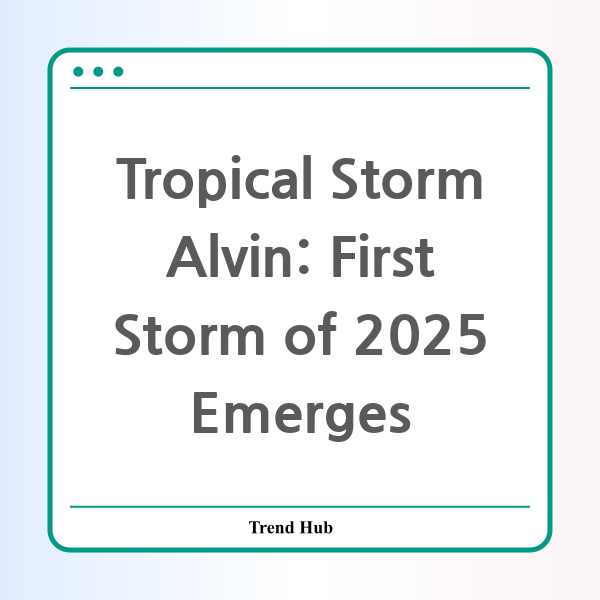* This website participates in the Amazon Affiliate Program and earns from qualifying purchases.

Is your emergency plan ready for Tropical Storm Alvin?
The 2025 hurricane season has officially kicked off with the formation of Tropical Storm Alvin, the first named storm of the year. This development serves as a crucial reminder for all residents living in coastal areas to reassess their preparedness plans as we delve into yet another potentially active hurricane season.
Tropical Storm Alvin was first detected off the southwestern coast of Mexico, and it has already started to exhibit characteristics typical of a tropical cyclone. According to advisories from the National Hurricane Center (NHC), the storm will benefit from warm ocean temperatures and low wind shear for the next 12 hours, which are conducive conditions for intensification. As of Thursday afternoon, Alvin was located approximately 565 miles south-southeast of the southern tip of the Baja California peninsula, with maximum sustained winds reaching 60 mph.
Understanding the Path and Potential Risks
Initially, Tropical Storm Alvin is expected to travel northwest, then shift slightly more north-northwest before taking a final turn northward. However, as it approaches the Baja California peninsula on Friday night, it is likely to encounter cooler sea temperatures and increasing wind shear, which could significantly weaken the storm. The NHC forecasts that Alvin may have already peaked in strength, and by the time it reaches the cooler waters, it may be downgraded to a remnant low pressure system.
Despite its anticipated weakening, Alvin is generating surf swells that could pose serious hazards to the coastlines of west-central Mexico and the southern Baja California peninsula. Residents and visitors along these areas should be cautious of life-threatening surf conditions and rip currents as the storm passes through.
What to Expect Beyond Alvin
The implications of Tropical Storm Alvin extend beyond Mexico; the remnants of the storm are predicted to shift northward, reaching the Southwest United States by the weekend. This could lead to active weather patterns in regions such as Phoenix and Tucson, which typically experience drier conditions during this time of year. Forecasters expect that moisture from Alvin may contribute to unusual rainfall, resulting in increased shower and thunderstorm activity across the Southwest, especially on Sunday.
As we move further into 2025, the National Oceanic and Atmospheric Administration (NOAA) has already released its predictions for the Atlantic hurricane season, forecasting a range of 13 to 19 storms, with a substantial number expected to develop into hurricanes. The potential for three to five major hurricanes (Category 3 and above) indicates a season influenced by factors such as warmer-than-average ocean temperatures and low wind shear, making it crucial for those living in vulnerable areas to remain alert.
Prepare for a Busy Hurricane Season
In light of these developments, it’s essential for all coastal residents and those in hurricane-prone regions to have an up-to-date emergency preparedness plan in place. This includes having necessary supplies stocked, knowing evacuation routes, and staying informed through reliable sources. It’s advisable to monitor updates from the National Hurricane Center and local weather services as conditions can change rapidly. As we navigate through the season, remember: preparedness is not just a goal, it’s a necessity.
Stay informed, stay safe, and prepare for more storms ahead as we plunge deeper into the hurricane season.
* This website participates in the Amazon Affiliate Program and earns from qualifying purchases.